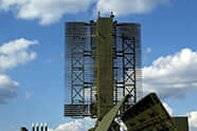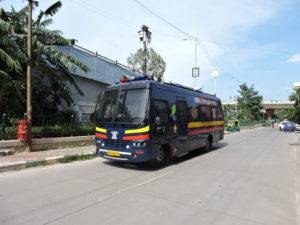Introduction
How often does one hear, when video surveillance footage is being reviewed after an incident, a user say that s/he wished that a specific camera was focusing at a spot farther away or that s/he wished that so-and-so object/individual was in focus rather than appearing blurred? Not surprisingly, very often, when the surveillance target is a large area or a crowded setting.
So far, the solution to the requirement for sharp focus at various depths-of-field has been to deploy more surveillance cameras focusing at different distances. However, there is an elegant alternative in the horizon, in the form of digital light field technology, and this brief looks at how this alternative is going to revolutionise photography and video surveillance.
What is the light field?
The light field is a function that describes the amount of light travelling in every direction through every point in space.
How is this relevant to photography? Traditional photography captures light, through the lens-and-recorder combination, reflecting from the objects in the frame. In doing so, this technique aggrregates the information from all the light rays striking each point of an image and misses out on capturing the information on each light ray that makes up the image. The reason for this is that technology, for a large part of the history of the development of photography, did not allow this information to be captured.
However, recently, with the advances in sensor technology, it has been possible to design cameras that capture the light field for a particular scene. A light field camera, also called a plenoptic camera, is a camera that uses a micro-lens array to capture 4D light field information about a scene. The micro-lens array is placed between the main lens ( at, before, or after the focal plane) and the camera sensor. These designs had, so far, suffered from problems of low image resolution and low angular resolution.
 |
| Figure 1: The micro-lens array used in a plenoptic camera (Credit: Raytrix GmbH, www.raytrix.de) |
Synthetic Aperture Photography
Synthetic Aperture Photography is an advance on previous designs in that it exploits the computing power now available in digital cameras to overcome the earlier limitations of plenoptic cameras.
Just as a Synthetic Aperture Radar (SAR) uses a significant amount of post-processing, to deliver images of finer resolution than provided by standard beam-forming radars, plenoptic cameras using Synthetic Aperture Photography carry out computationally intensive operations to deliver images at a higher resolution than earlier designs.
These cameras use a similar micro-lens array arrangement as earlier designs; with the innovation being the software simulation of the recorded light rays, using ray-tracing techniques, such that the scene is recomputed at different depths-of-field.
A couple of companies are now offering hand-held plenoptic cameras that allow refocusing after the image has been captured. Raytrix, a German company, already has a few camera solutions in the market, while Lytro, an American company, will shortly be releasing its product in the market. These cameras are currently targeted at consumer photographers, but it won’t be long before variants supporting video surveillance requirements are released.
Conclusion
With the commercial availablility of plenoptic cameras, based on the synthetic aperture photography design, video surveillance is likely to become a lot more powerful. The complaint of “suspect not in focus” is likely to be heard less: more likely is a situation where law-enforcement agencies have an almost panopticon digital view of areas under surveillance.
It remains to be seen whether the promised benefits are delivered on the field; but, certainly, all video surveillance users will be looking forward to the introduction of plenoptic cameras, targeting video surveillance requirements, in the market.



